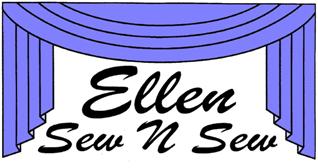I just completed a challenging footstool project for a customer which required a couture sewing approach. After I was finished, I realized it would make a good blog posting, but too late to take a "before" and "in Progress" photo. Here is the finished project...
Originally, this footstool had 3 problems. It was too tall for the customer to comfortably put her feet on in her favorite chair. The fabric is a woven plaid that was fraying under the stress of being pulled very tightly over the foam. It also looked like a muffin or a mushroom, with the cushion bulging over the base.
The client provided me with a spare pillow to remake the cover. The pillow, deconstructed, was just big enough to replace the top section, but not big enough to center the green stripe. I reused the original button and made new cording with 1/4" soft welt.
To tackle the problem of being too tall, I simply took the 2 foam pieces off of the base and cut 3-1/2" off the bottom of the foam with an electric carving knife to make the finished height 14-1/2". The top of the foam had the shape of a dimple, so I wanted to preserve that. It looked like half a bagel! The other piece of foam wrapped around, , and I just reattached it with adhesive spray and trimmed it to size with my knife. I put new dacron over the whole thing to give it softness.
To handle the the problem of the fabric fraying under the stress of use, I did 2 things. First, I covered the stool with a muslin cover that was drawn in tightly to create a pleasing shape. This solved the muffin top issue. I cut a circle the same size as the base and put a band on it which I marked to a depth at 3-1/2" so that I would have a uniform height to work with. This is a couture technique, to make a foundation to overlay the "good" fabric on. This is a good technique to use on Padded cornices that are going to be covered in silk or flimsy fabrics that aren't stable enough for upholstery. The stress of use would be transferred to the muslin cover instead of the designer fabric.
To prevent fraying of the plaid fabric, I serged all the pieces before sewing them together, and double stiched the seam, first at the seam and again 1/4 " away.
Now that I had everything prepared, it was time to assemble it all together. The original cushion was poorly executed, and I was determined to impress this new client with my expertise. I went the extra mile of pin fitting the plaid cover so it would be perfect. I pinned the the circle to the the cushion, steaming it to the shape. I pinned the cord on, sewed it and then pinned and basted the band on to achieve a perfect fit. It was a little extra work, but it paid off.
It brought me back to my days of draping class at FIT. How I loved draping a beatiful fabric onto my Wolf Form...

No comments:
Post a Comment